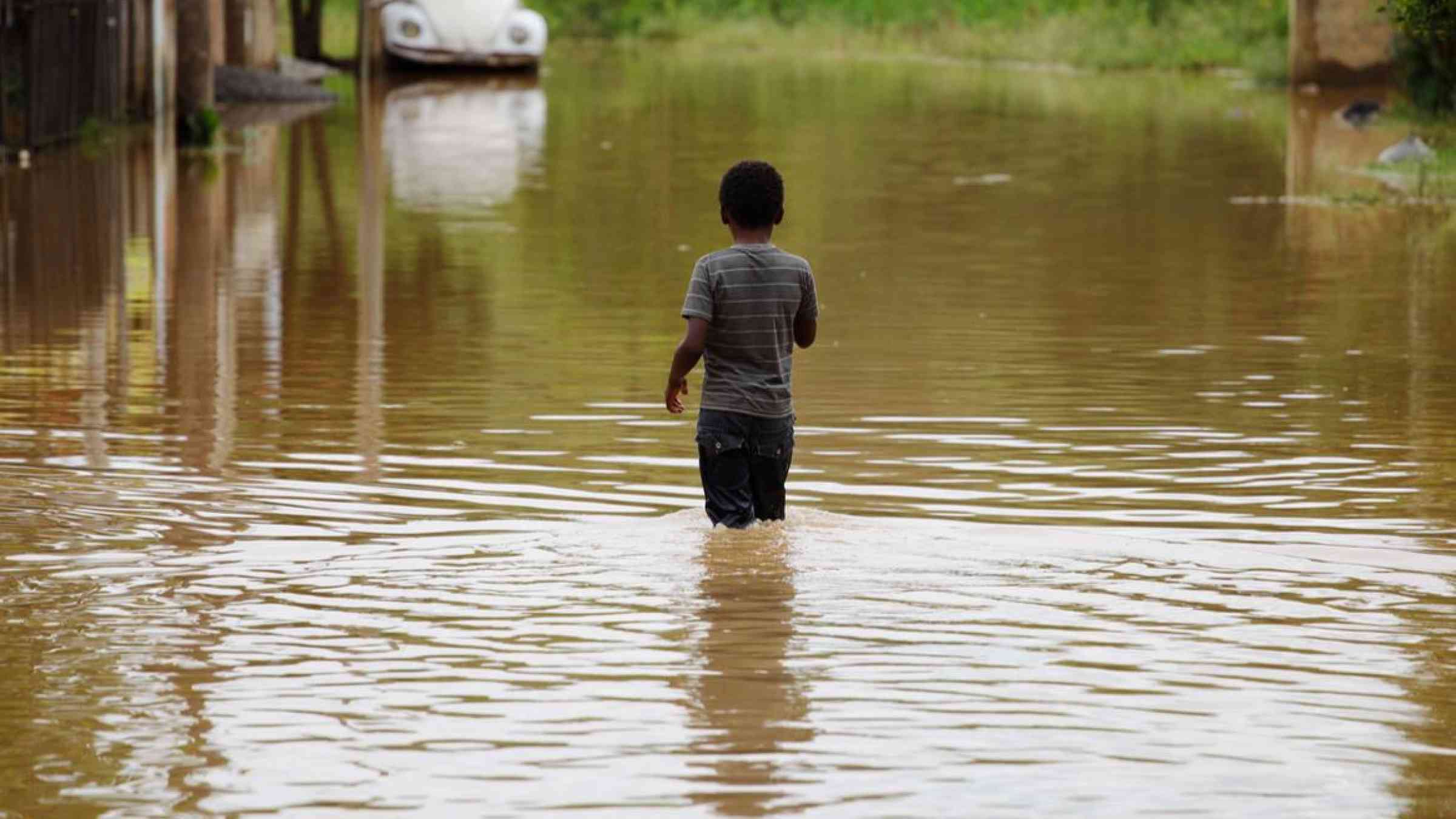Development at risk as the number of people uprooted by climate change & conflict soars

Those displaced from their homes doubled in the last 25 years, and cost the world more than US $20 billion in 2020 alone.
New York - Governments the world over must urgently respond to a rapid increase in the number of people forcibly displaced by conflict and climate change, or risk going backwards in development targets says a study released today.
2020 saw more people uprooted by conflict and crisis than at any other time in recorded history and the global population of internally displaced people (those forced to flee their homes but who stay in their country of origin, as opposed to refugees, who cross international borders), doubled over the last 25 years from about 27 to 55 million. During the same time period, the average amount of time this group of people spent displaced also increased to 17 years. Providing basic services and covering loss of income for internal displacement cost the world more than $20 billion in 2020.
The new report, Towards Development Solutions to Internal Displacement: A Political Economy Approach, has been produced by the UN Development Programme (UNDP) and School of Oriental and African Studies (SOAS), University of London. It cautions that this financial burden may harm long-term efforts to improve living standards, because low and middle-income countries host almost all internally displaced people and bear most of the economic burden. It warns that many countries with high populations of displaced people are at risk of failing to achieve the Sustainable Development Goals and fight their own battles against poverty.
“Internally displaced people are among the most vulnerable in the world. Many lack protection, shelter, education, healthcare, and employment - and are exposed to discrimination, exploitation and gender-based violence,” says Asako Okai, UN Assistant Secretary-General and Director of UNDP's Crisis Bureau. ”They can put pressure on services, such as healthcare, transport, policing, education and sanitation. Yet with the right support, they can still make vital contributions to their own and their community’s development,”
Because internally displaced people stay in their countries of origin, this can make a difference to the way they are treated. “While refugees fall under international law, internally displaced persons remain the responsibility of their own government,” says the report. “This makes internal displacement one of the greatest development challenges as the government tasked with the wellbeing of IDPs may well be the reason they fled.”
In 2020, most internally displaced people were forced to flee because of violence or armed conflict. However, disasters, climate change, a degraded environment and extreme weather events are increasingly driving people to uproot from their homes. In Bangladesh alone, the number of people displaced by climate change could reach 13.3 million by 2050.
Today, the countries with the largest populations of internally displaced people are Syria (6.5 million), the Democratic Republic of the Congo (5.2 million), Colombia (4.9 million), Yemen (3.6 million), Afghanistan (3.4 million), Somalia (2.9 million), and Sudan (2.2 million). In these countries, displaced people face an increased risk of homelessness, food and water shortages, a lack of access to health care and fewer opportunities for education, vocational training and employment. Many – especially women and young people - are at high risk of forced marriage, human trafficking and sexual exploitation.
“The record number of people internally displaced and the length of their displacement show that there needs to be a greater emphasis on inclusion, resilience and finding longer-term solutions,” says Professor Laura Hammond, author of the report. “Asking who stands to gain or lose from maintaining the conditions that lead to internal displacement, and from working towards comprehensive solutions, will help find practical solutions.”
The paper looks at experiences from Bangladesh, El Salvador, Iraq and Sudan, and considers how vested interests play a role in determining why and how displacement happens, who is displaced and who stays behind, and what is possible in terms of solutions. It argues that anticipating displacement and integrating the needs of affected individuals and communities into national development plans, strategies and laws is often lacking. In 2021, for instance, many national COVID-19 response plans have not included internally displaced people yet. Embedding displacement within a country’s development goals requires giving a say to affected communities in creating those plans.
With programmes on internal displacement in over 60 countries, UNDP collaborates with national and local governments, justice, security and human rights actors, other UN agencies, the private sector, civil society as well as with people on the move. Towards Development Solutions to Internal Displacement: A Political Economy Approach is part of UNDP submissions to the UN Secretary-General’s High-Level Panel on Internal Displacement. UNDP’s recommendations include maximizing a development approach to internal displacement to protect lives, provide greater socio-economic integration, address the drivers of forced displacement and reduce discrimination.
While refugees fall under international law, internally displaced persons remain the responsibility of their own government. This makes internal displacement one of the greatest development challenges as the government tasked with the wellbeing of IDPs may well be the reason they fled.
Toward Development Solutions to Internal Displacement: A Political Economy Approach